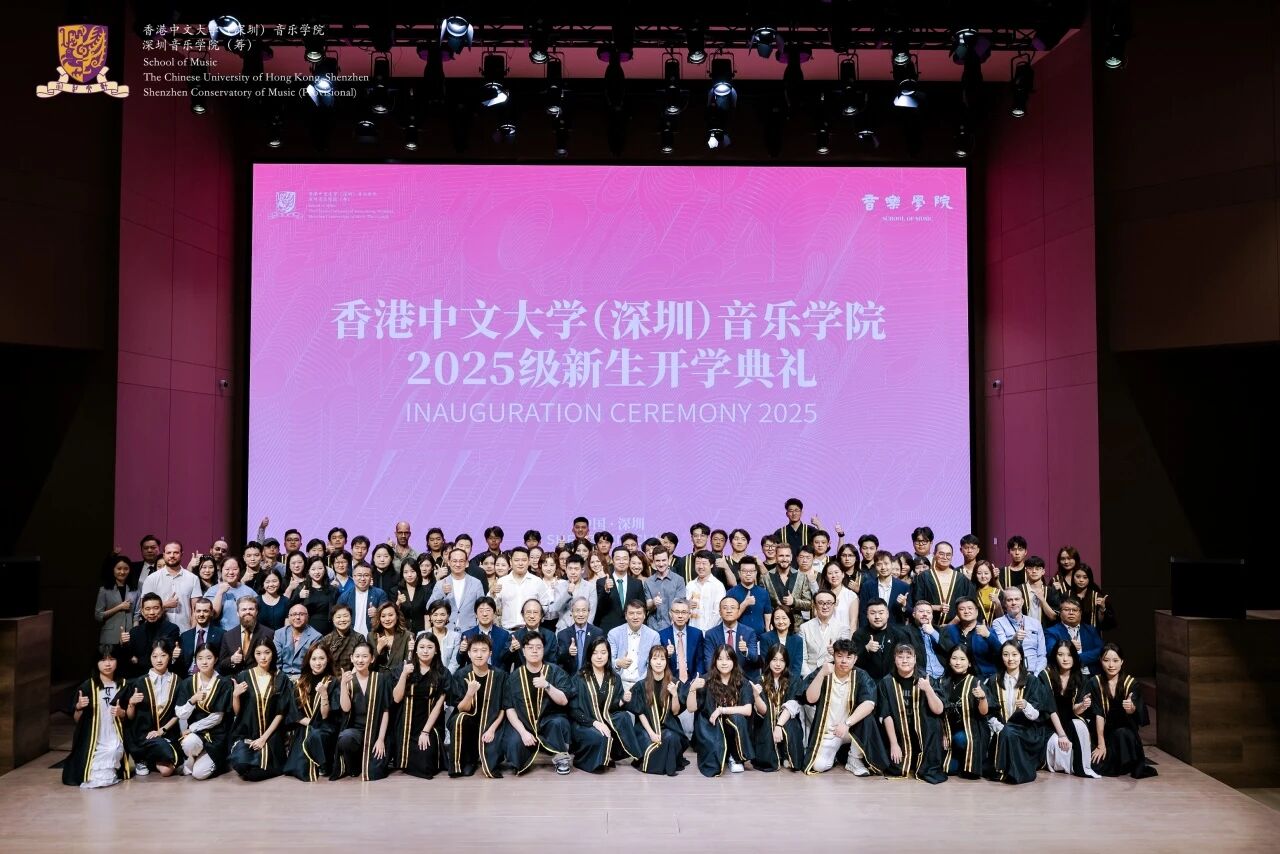School of Music Unveils New Campus: An Ideal Environment for Art Education
In August 2025, The Chinese University of Hong Kong, Shenzhen (CUHK-Shenzhen) School of Music officially opened its new campus, marking a new phase in the University’s development. Construction of the project began in October 2022, after a nearly three-year construction period, the main structures have been completed and are now operational. With the exception of the Performing Arts Center, the other six main buildings were successfully handed over in August this year. With the opening of the new campus, School of Music has officially concluded a four-year period of operating from a transitional campus. Currently, all faculty and students of the School of Music and the Eighth College have moved into the new campus, embarking on a new chapter of campus life.




?
The new campus of CUHK-Shenzhen School of Music covers an area of approximately 73,800 square meters, with a total floor area of about 130,000 square meters, and is designed to accommodate 1,000 students. The design integrates Lingnan regional characteristics, guided by the concept of "Composed with the Spirit of Nature, Layered with the Rhythm of Shenzhen," forming three main clusters: performance venues, teaching facilities, and residential spaces.
The architectural complex is divided into northern and southern zones. The southern zone features compact teaching areas, while the northern zone offers open residential spaces, creating a spatial rhythm of "density and openness." The planning emphasizes acoustics and user-friendly design, with a functional layout that ensures convenience. Covered corridors connect all seven main buildings, facilitating easy movement and instrument transportation.
The performance cluster, inspired by the petals of the bougainvillea and the imagery of a "spreading eagle’s wings," features flowing lines that embody musical rhythm and serve wind-guiding functions. The teaching and residential clusters continue the architectural style of the CUHK-Shenzhen campus, incorporating the wisdom of Lingnan courtyard design. Vertical light wells and horizontal corridors form U-shaped courtyards, achieving effective ventilation and natural lighting, with shading for cooling, thus creating a pleasant "campus lung."
Academic Office Building and Performing Arts Building include an 818-seat theater, an 800-seat concert hall, a 200-seat modern music hall, as well as a library, administrative offices, and teaching spaces. The theatres, concert halls, and recording studios are built with fully decoupled structural designs, while practice rooms and rehearsal spaces feature nested isolation constructions. Combined with advanced sound absorption and vibration damping technologies, these architectural solutions ensure exceptional acoustic performance. The concert hall is equipped with a 60-stop pipe organ, meeting international professional standards. These venues not only serve teaching purposes but also collaborate with domestic and international arts institutions to establish a high-end cultural and arts platform in the Guangdong-Hong Kong-Macao Greater Bay Area.
Music Teaching Building and Music Practice Complex are equipped with over 400 practice rooms, multiple rehearsal halls, experimental and practical training spaces, and research centers, fully meeting the needs of professional teaching and creative work.
The Eighth College and Student Development Center provide hundreds of student dormitories, a canteen capable of serving hundreds of people, and a sports hall, offering comprehensive living and sports facilities for faculty and students. Additionally, the new campus features public areas such as waterfront landscapes and activity green spaces, serving as shared venues for faculty-student interaction and for the public to experience musical arts.


?
The opening of the new campus for CUHK-Shenzhen School of Music not only provides world-class teaching, research, and living spaces for its faculty and students but also presents new opportunities for the University in cultivating high-end artistic talent, optimizing the educational environment, and enhancing college culture. It further contributes to educational innovation and talent development in the Guangdong-Hong Kong-Macao Greater Bay Area and across the nation.
?





